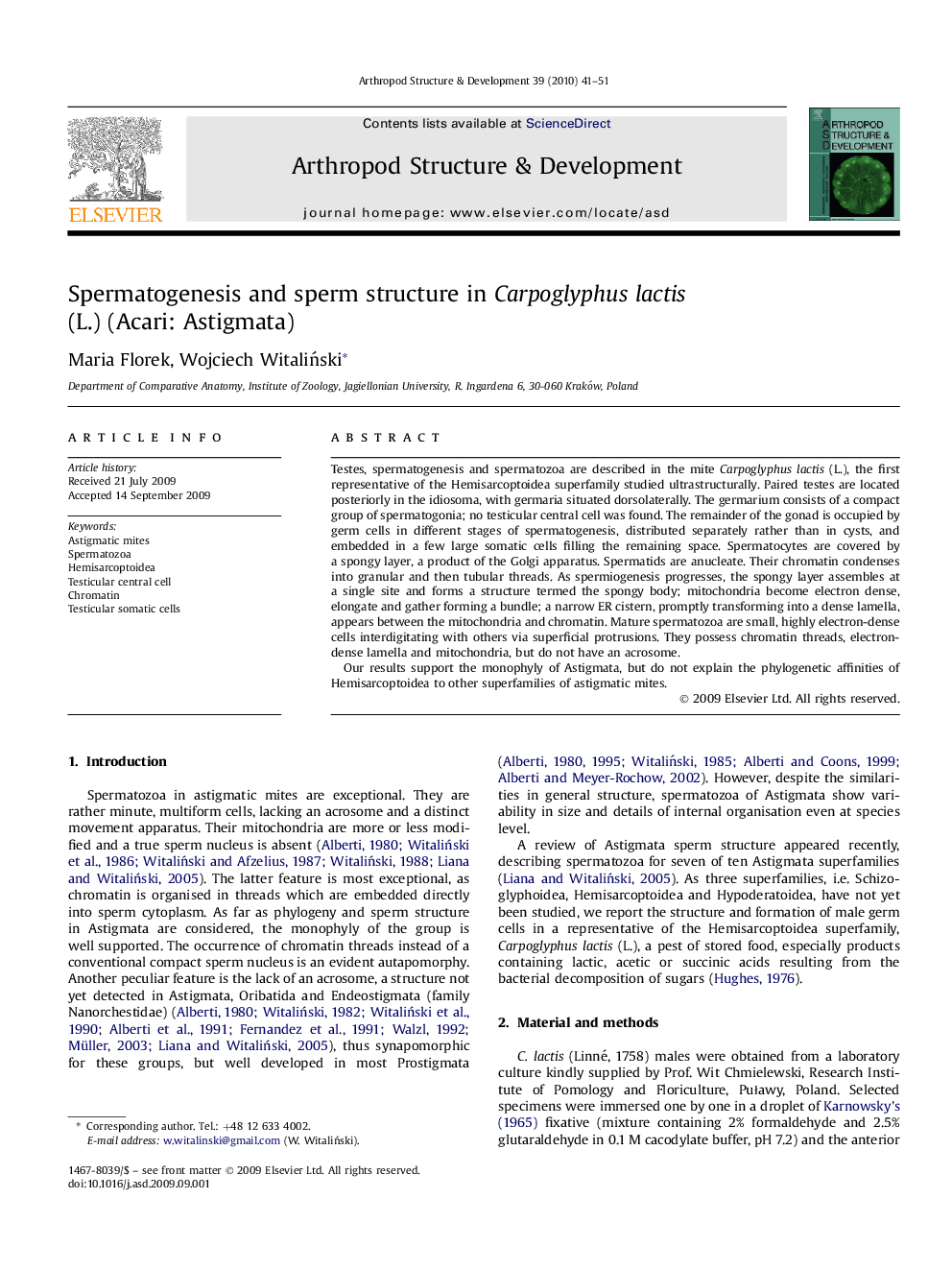| Article ID | Journal | Published Year | Pages | File Type |
|---|---|---|---|---|
| 2778968 | Arthropod Structure & Development | 2010 | 11 Pages |
Testes, spermatogenesis and spermatozoa are described in the mite Carpoglyphus lactis (L.), the first representative of the Hemisarcoptoidea superfamily studied ultrastructurally. Paired testes are located posteriorly in the idiosoma, with germaria situated dorsolaterally. The germarium consists of a compact group of spermatogonia; no testicular central cell was found. The remainder of the gonad is occupied by germ cells in different stages of spermatogenesis, distributed separately rather than in cysts, and embedded in a few large somatic cells filling the remaining space. Spermatocytes are covered by a spongy layer, a product of the Golgi apparatus. Spermatids are anucleate. Their chromatin condenses into granular and then tubular threads. As spermiogenesis progresses, the spongy layer assembles at a single site and forms a structure termed the spongy body; mitochondria become electron dense, elongate and gather forming a bundle; a narrow ER cistern, promptly transforming into a dense lamella, appears between the mitochondria and chromatin. Mature spermatozoa are small, highly electron-dense cells interdigitating with others via superficial protrusions. They possess chromatin threads, electron-dense lamella and mitochondria, but do not have an acrosome.Our results support the monophyly of Astigmata, but do not explain the phylogenetic affinities of Hemisarcoptoidea to other superfamilies of astigmatic mites.
